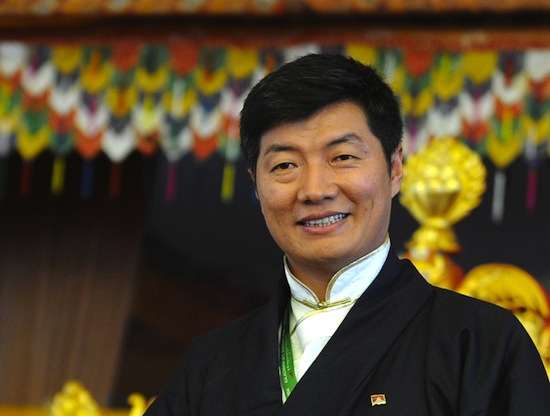When the president (Sikyong) of the Central Tibetan Administration (CTA), Lobsang Sangay, entered the precincts of the White House on November 20, it marked a red-letter day for the Tibetan government-in-exile. It also injects a new element into Sino-Indian relations. His meeting with Robert Destro, the Special Coordinator for Tibetan Issues, at the invitation of the US State Department is “an acknowledgement” by the USA of both the democratic system of the CTA and its political head, claims the CTA. The Tibetan government-in-exile, which is yet to be recognised by any country, was in the past denied entry to the US Administrative buildings. “The logic for the denial was that the US government does not recognise the Tibetan government-in-exile,” according to the CTA. Be that as it may, the momentous event of Sangay’s entry into the White House opens a new chapter in the struggles of the Dalai Lama and his followers in the Tibetan government-in-exile to get international acceptance and support to the cause they have been championing since they fled their country in 1959 to evade reprisals by Communist China and get refuge in India.
In sharp contrast to the US state department’s open invitation to the CTA, the visit of Foreign Secretary Harsh Vardhan Shringla to Dharamshala in July was kept under wraps. India’s scared reactions in the backdrop of the acrimony over Chinese incursion into Indian territory in Ladakh sends only wrong signals. China is not only continuing to adopt belligerent postures over its Ladakh adventure, but is slowly and steadily encircling India through strategic alliances, trade pacts, and military build-up close to Indian borders with Pakistan and Nepal. If South Block opens regular dialogues with the Dalai Lama and the CTA officials, it may be good for both the Tibetan cause and India. But is India in any position to cock a snook at China in this manner is a big question that probably no one is willing to answer.
Shortly before Sangay’s visit to the White House, the US House of Representatives passed a resolution ‘affirming the significance of the advocacy for genuine autonomy for Tibetans in the People’s Republic of China and the work His Holiness the 14th Dalai Lama has done to promote global peace, harmony, and understanding.’ Among other things, the resolution said that ‘it would be beneficial to convene a bipartisan, bicameral forum… between Members of Congress and His Holiness the Dalai Lama to discuss peaceful solutions to international conflicts.’ During the debate on 18 November Representative Ted Yoho also strongly criticised Beijing for violating the Tibetans’ religious freedom: “The CCP sees Tibet culture and religious heritage as a threat to its control.”
The US legislation has even gone to the length of lending its support to the role the Dalai Lama can play in choosing his successor, the 15th Dalai Lama. “The wishes of the 14th Dalai Lama, including any written instructions, should play a determinative role in the selection, education, and veneration of a future 15th Dalai Lama,” it categorically states. If India is serious about taking on China, the least that New Delhi can do is simply to declare that India is ready to put its seal of approval on all decisions the Dalai Lama takes on his reincarnation and that it will welcome the 15th Dalai Lama as an honoured guest of India, the status the present pontiff has been enjoying since 1959.
India’s prevarication on the Tibetan question will be at its own peril since the country will have to bear the brunt of changes in the Tibetan plateau effected by China to extract the plateau’s rich natural resources. The US Bill recognises the key role of the Tibetan plateau containing glaciers, rivers, grasslands, and other geographical and ecological features that are crucial for supporting vegetation growth and biodiversity, regulating water flow and supply for an estimated 1.8 billion people.
India had a full-fledged mission in Lhasa for about two decades since 1947. An ICS officer Hugh Richardson served as the first head of the Indian Mission. However, the Prime Minister quietly downgraded the Mission into a Consulate General in 1952 and it was closed down for inexplicable reasons in December 1962. What exactly happened during the crucial two years before the Sino-Indian conflict is still shrouded in mystery. There are unconfirmed reports that the Indian Consul General in Lhasa had virtually been kept under house-arrest for thirteen months before the war broke out. But, there was no retaliation or complaint lodged by the Indian government.
Decades later Shivshankar Menon, as Ambassador in Beijing and Foreign Secretary, took initiatives for reopening the Mission in Lhasa, but to no avail. Nepal still has a representative in Lhasa today. That speaks volumes for the importance Nepal is getting in China’s scheme of things in the Himalayan region.
Taking all things into consideration, India seems to be floating into a dangerous phase in the neighbourhood politics. While India’s chest thumping may be acceptable at home by some, bravado on the international scene seems to be unacceptable by all our neighbours. India’s failed diplomacy seems like it will soon bring forth tremendous amount of despair and grief to all of us.
